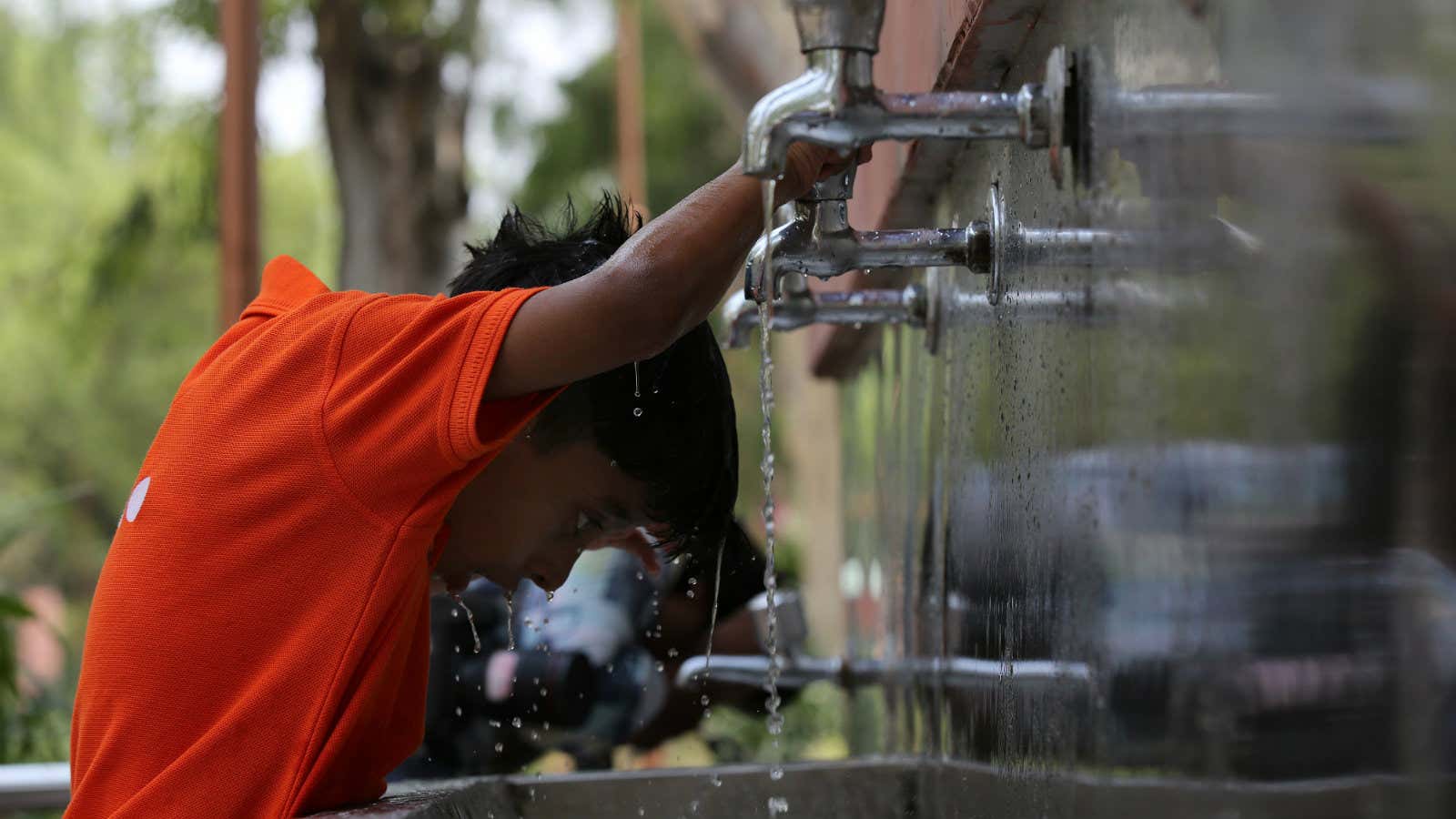The average temperature in India was “significantly above normal” in 2018, says its weather department.
The annual mean surface air temperature last year, averaged across the country, was 0.41°C above the 1981-2010 average, the India Meteorological Department (IMD) said in its Statement on Climate of India in 2018, released yesterday (Jan. 16). This makes 2018 the sixth warmest year India has witnessed since 1901, when it first began recording climate data.
The warmest recorded years in India’s history:
While 2016 remains the hottest year on record, IMD warned that 11 out of India’s 15 warmest years so far were all within the past 15 years. Moreover, the past decade has been the warmest on record, with maximum temperatures also showing a significant increasing trend.
This is quite evident from the scorching summer temperatures seen in several parts of India. In 2018, for instance, temperatures soared well above 40°C in states such as Rajasthan and Andhra Pradesh, prompting local authorities to step up heatwave action plans and warn residents against spending too much time outdoors.
Previous research has shown that India’s heatwaves have increased in duration, and global warming could further increase their frequency and intensity, posing a growing threat to public health. Between 1992 and 2016 alone, heatwaves claimed the lives of nearly 26,000 Indians (pdf). The economic cost is also significant, with millions of labour hours lost, especially in India’s crucial agricultural sector.
To combat rising temperatures, India has committed to reduce greenhouse gas emissions by promoting renewable energy and switching to electric vehicles. But a 2017 study showed that just a half-degree temperature increase could lead to a significantly higher death toll, suggesting that India is running out of time to reverse its course.
